- Cart
- |
- Personal Center
- |





1560nm PPLN Waveguide Frequency Conversion Module
Optical frequency doubling is widely used in laser technology to convert infrared lasers to visible light or shorten visible wavelengths. It expands laser spectrum coverage and can involve multi-stage frequency doubling for even shorter wavelengths. Ideal Photonics’ nonlinear crystals enable sum-frequency, difference-frequency, and frequency doubling. The 1560nm PPLN (Periodically-Poled Lithium Niobate) crystal, for example, uses second-order nonlinear effects to convert 1560nm light to 780nm for optical second-harmonic generation (SHG). This process is achieved through the crystal’s waveguide structure, which increases efficiency, with polarization-maintaining jumpers pre-coupled at both ends for easy integration without manual coupling.
Product features:Laser Microscopes、 Fluorescence Microscopes、 Flow Cytometers、 Various Spectroscopy Applications、 Physical and Chemical Applications
Part Number:--
Application area:
Add to Cart Consult Favorite

General Parameters
Built-in Mechanism | Option |
Peltier and thermistor for temperature control | Fiber laser source for each wavelength |
SWPF filter for fundamental wave cutting | External crystal temperature control driver |
PD for light intensity monitoring | External safety shutter |
External acousto-optic modulator (AOM) |

Current Supported Wavelength Conversion | 1178nm→ 589nm , 1064nm→ 532nm , 1590nm→ 795nm, 1560→ 780n m , 1160nm-580nm , 1550nm-775nm, 1396nm-698nm, 1018nm-509 nm |
Output Power* | Up to 1W (spatial output) |
Output form | Collimated light or fiber |
Beam quality | Spatial single-mode , TEM00, M ² ≤ 1.1 |
*(Note: Output power may vary depending on the characteristics of the input pump laser, such as power and linewidth.)
Name | Parameter (Space Out) | Parameter ( Fiber Coupled Output) |
Order Model | WH-0780-000-A-B-C (space out) | WH-0780-000-F-B-C (fiber out) |
Required Pump Wavelength | 1560 nm | 1560 nm |
Frequency Doubling Target Wavelength | 780 nm | 780 nm |
Frequency Doubling Efficiency | > 50 %/W | > 25%/W |
When pump power is below 100 mW | When pump power is below 100 mW | |
Operating Temperature (Top) | Typ.: > 30 degree C | Typ.: > 30 degree C |
Temperature fine tuning is required. | Temperature fine tuning is required. | |
Thermistor | B = 3450 | B = 3450 |
TEC Current | 2 A max | 2 A max |
Module Size | 54 mm x 30 mm x 11.2 mm | 54 mm x 30 mm x 11.2 mm |
Output Window | IR-cut filter | none |
Input Fiber | 1550 nm PANDA fiber with FC / APC connector | 1550 nm PANDA fiber with FC / APC connector |
Output Fiber | Space out | 850 nm PANDA fiber with FC / APC connector |
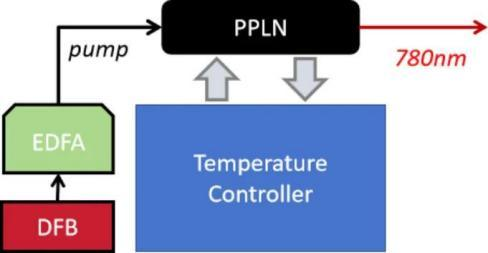
Optical Layout for the Use of PPLN Frequency Doubling Crystal
Test example: 1560 → 780nm
First, select a 1560nm DFB semiconductor laser as the seed source and input it into an EDFA for optical amplification. The amplified fundamental wave light is then used as the pump source for the PPLN crystal. The light is input into the crystal's input port, and after passing through the PPLN, the frequency-doubled 780nm light is generated. Before injecting the pump, it is essential to ensure that the temperature controller of the PPLN is functioning properly and that the crystal is stable at the set temperature.
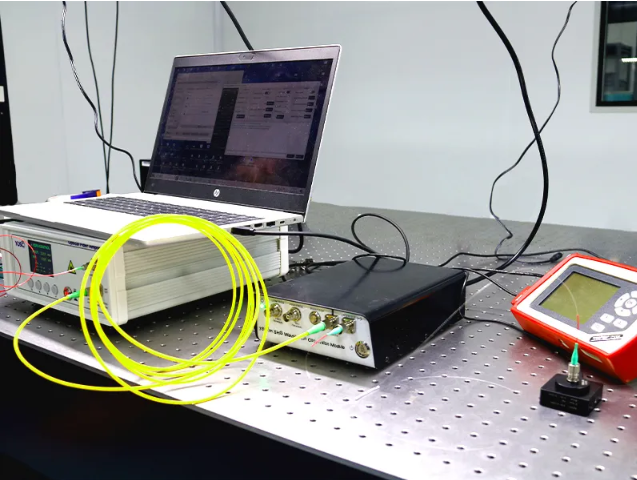
The 780nm output spectral component was tested using a spectrometer to confirm the frequency doubling process. The spectrum is shown below:
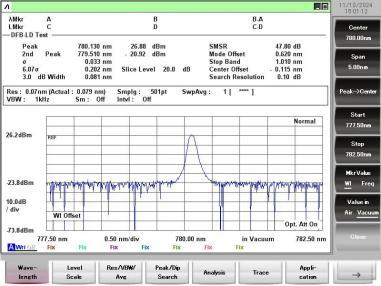
By adjusting the EDFA current, we tested the frequency doubling power variation with different input powers. Higher input power results in higher frequency doubling efficiency.
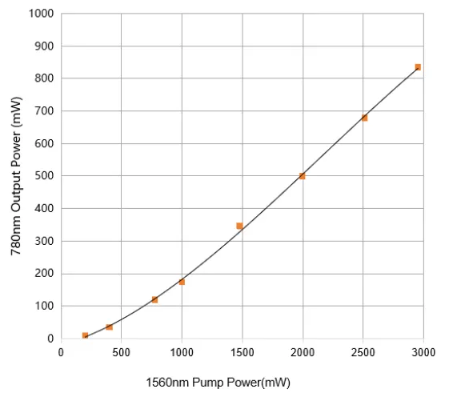
Finally, we tested the power and frequency stability of the output frequency-doubled light, verifying the operational stability of the PPLN crystal. These two parameters also depend on the noise of the EDFA and DFB, requiring a low-noise light source for testing.
Power stability test:
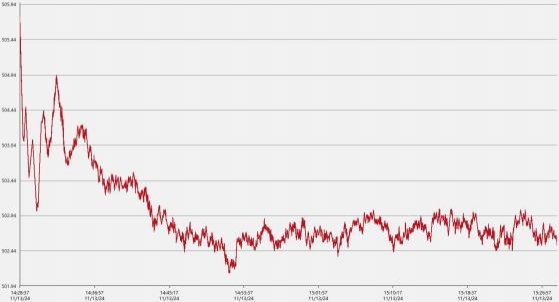
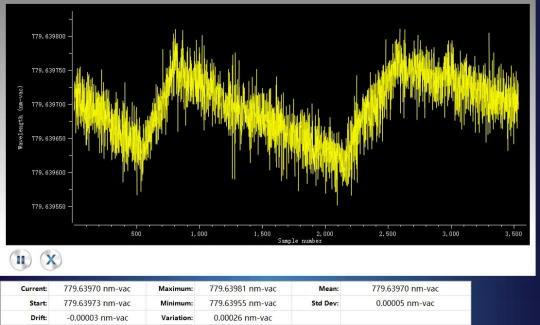
Precautions:
The waveguide must be properly heat managed. It is recommended to mount the waveguide on a heat sink, with thermal conductive materials like thermal grease applied to the contact surface between the waveguide and the heat sink. The recommended operating environment temperature is 10~30°C. If the temperature is outside this range, secondary temperature control for the heat sink should be applied, setting the heat sink temperature around 20°C. It is strictly prohibited to operate without secondary temperature control in environments exceeding the waveguide's matching temperature.
The matching temperature of the waveguide body must be in the range of 20~60°C.
Start the waveguide's temperature control first, wait for the temperature to stabilize, and then slowly increase the pump power. As the pump power increases, the optimal matching temperature of the waveguide may shift slightly. At this point, fine-tune the waveguide temperature to achieve maximum frequency-doubling output.
--
⇪